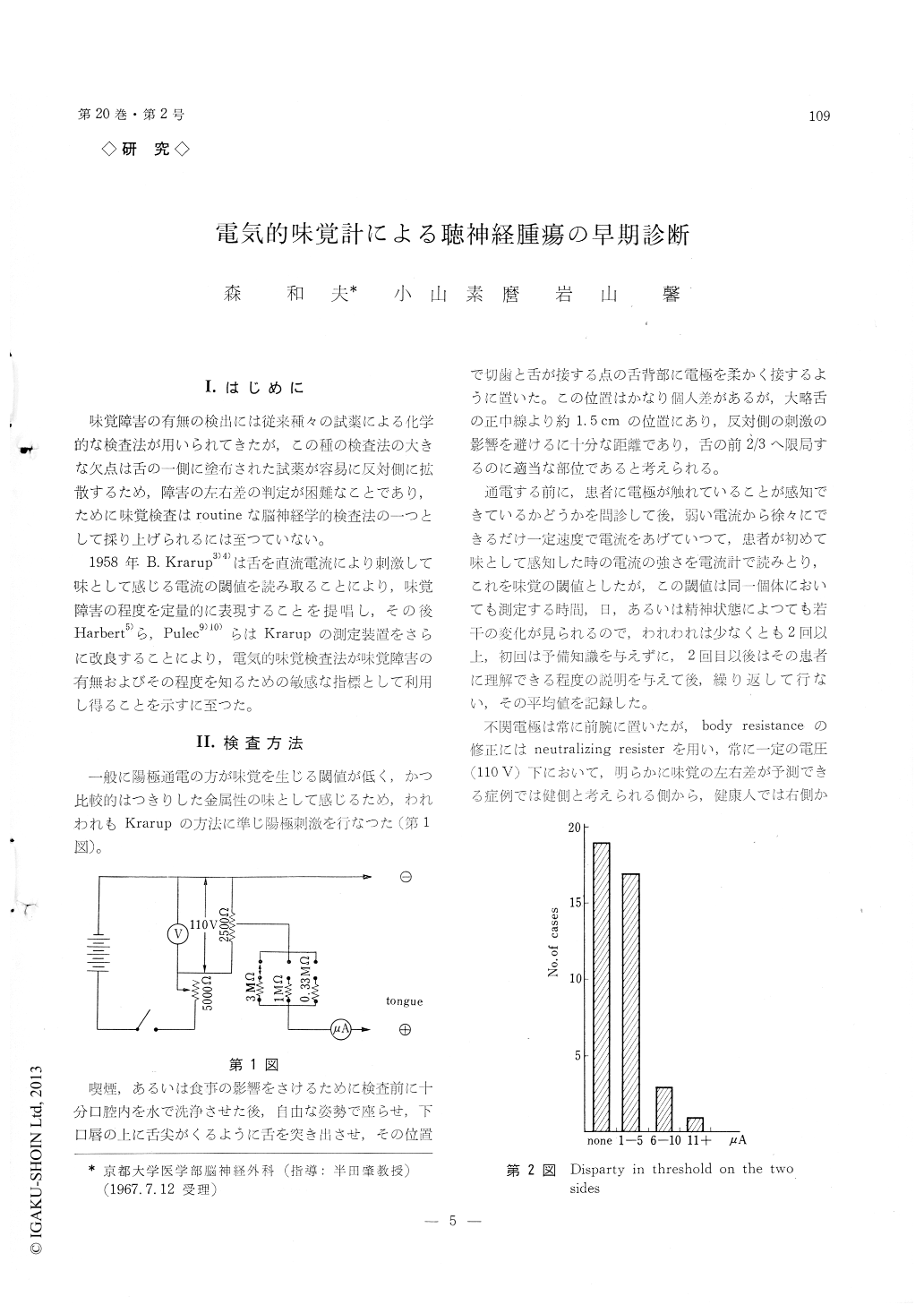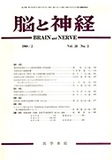Japanese
English
- 有料閲覧
- Abstract 文献概要
- 1ページ目 Look Inside
I.はじめに
味覚障害の有無の検出には従来種々の試薬による化学的な検査法が用いられてきたが,この種の検査法の大きな欠点は舌の一側に塗布された試薬が容易に反対側に拡散するため,障害の左右差の判定が困難なことであり,ために味覚検査はroutineな脳神経学的検査法の一つとして採り上げられるには至つていない。
1958年B.Krarup3)4)は舌を直流電流により刺激して味として感じる電流の閾値を読み取ることにより,味覚障害の程度を定量的に表現することを提唱し,その後Harbert5)ら,Pulecg)10)らはKrarupの測定装置をさらに改良することにより,電気的味覚検査法が味覚障害の有無およびその程度を知るための敏感な指標として利用し得ることを示すに至つた。
The electro-gustometry was carried out on 40 cases of normal persons and on 7 cases of acuoustic neurinomas using an apparatus modified from that designed by Krarup et al. (1958).
In 95% of normal persons could appreciate stimuli of 30μA or less and the threshold differences be-tween the right and left sides of the tongue werenegligible. On the contrary, remarkable raise of the taste threshold was observed on the affected side in all cases with tumor, although three of them did not show any noticeable facial weakness. This study confirms Krarup's conclusion that gal-vanic gustometry is clinically of value for quanti-tative determination of taste thresholds and for the detection of imparied facial nerve function which is difficult to find out with the ordinary exami-nation. Since the technique is sufficiently simple, it seems to be applicable in routine clinical trials in the field of neurosurgery and especially be useful for making an earlier diagnosis of acoustic tumors.

Copyright © 1968, Igaku-Shoin Ltd. All rights reserved.


